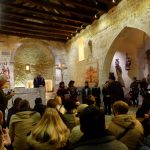May 6, 2019 – Day 2 of the recent Gastronaut foodie tour of the Krk Food Fest had a decidedly Glagolithic flavour.
Foodie media association Gastronaut embarked on a 3-day tour of the island of Krk last month, ahead of the annual Krk Food Fest which runs until May 31. It is an exciting gourmet time of year with Spring flavous and ingredients combining with some innovative chefs to produce a delightfully varied gastronomic offer. Gastronaut itself, led by Karin Mimica, is famed for organising the maximum possible in terms of gourmet and cultural experience in the shortest time. Day 1, for example, included visits to no less than 11 restaurants and wineries, which you can read about the first day here. Looking at the programme, the second day was due to be no less intense or fascinating.
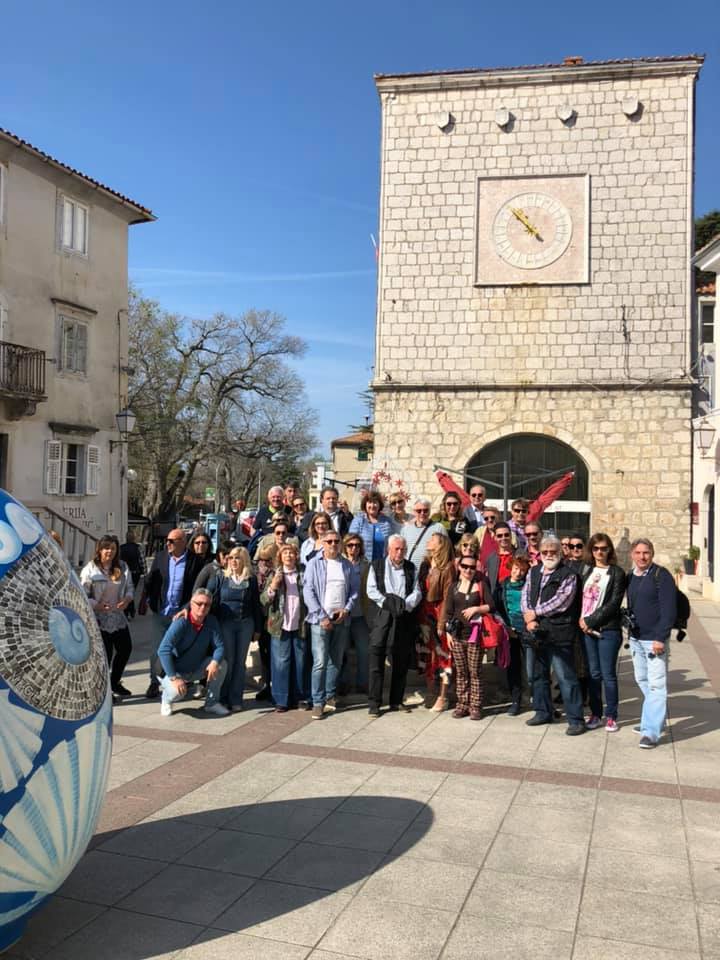
And so it proved. A leisurely start from Hotel Drazica in Krk and a guided tour around the historic Krk. The island has been inhabited uninterrupted since the Neolithic age, and Christianity appeared early, with the town of Krk having its own bishop as early as the 5th century. It is a delightful and compact small town, with plenty of features to reflect its various influences over the centuries.
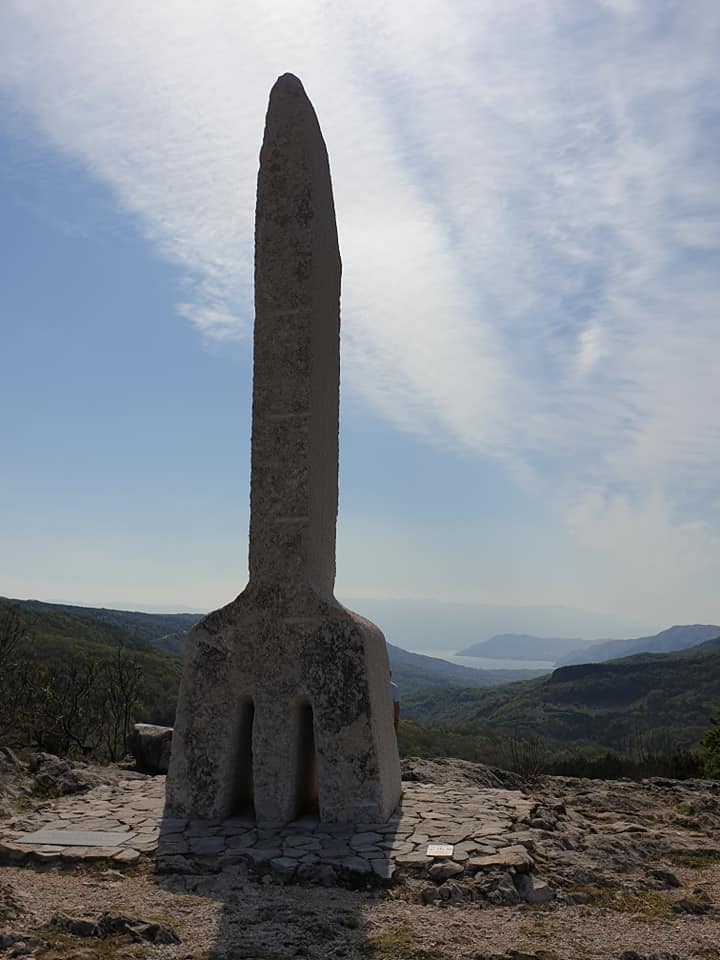
Arguably the highlight of the day, however, was my discovery of the fabulous Baska, a destination I knew nothing about prior to the trip, but which seemed truly to have everything on offer, including the rather fascinating Glagolithic script, which Baska is promoting in a very educational and adventurous way.
The script is thought to have been introduced by Saint Cyril, of Cyrillic script fame, back in the 9th century, and it is regarded as the oldest Slavic script. While its use at one time was fairly widespread in the Slavic world, it was preserved only the clergy in Croatia – particularly in the Kvarner region where Krk is situated – and was used in the writing of Church Slavonic until as late as the 19th century.
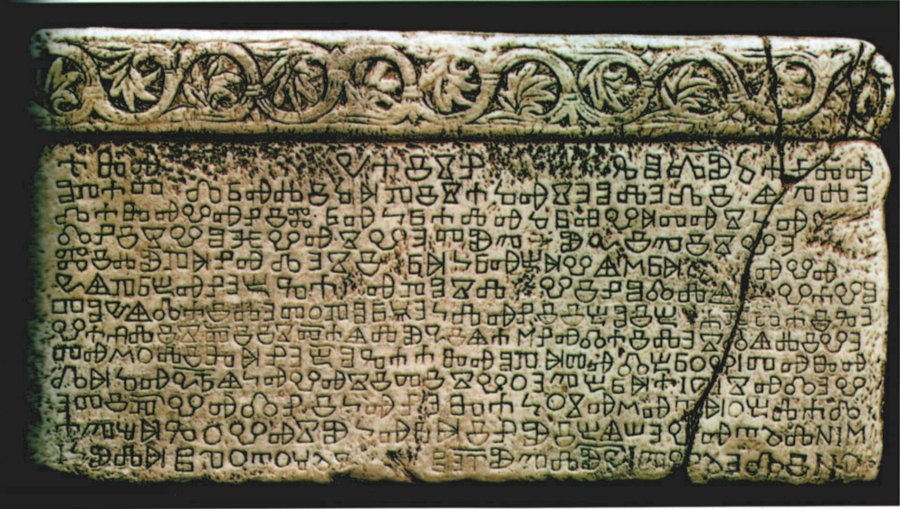
The discovery of the Baska tablet in the paving of the Church of St Lucy in Jurandvor near Baska, back in 1851 was a significant find – the tablet dates back to 1100 – and Baska has done a magnificent job establishing itself as a ‘spiritual home’ to Glagolithic.
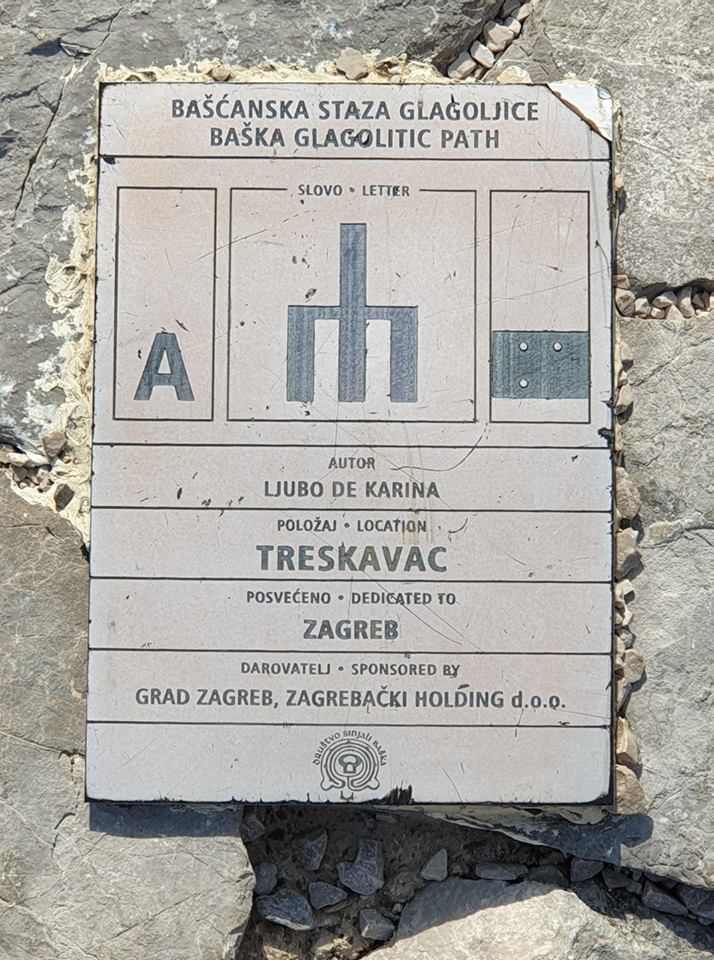
Visting Baska and its surroundings one cannot miss the Baska Glagolithic Path, a wonderful project of education, in which each of the Glagolithic letters is celebrated in stone (see the letter ‘A’ rising majestically in the photo above). Each latter has an accompanying plate which explains which letter it is, the location, sculptor, and the donor. Baska launched a nationwide appeal to support the project, and various locations around the country responded magnificently. Each location has a particular relevance to the letter, and you can learn more about this fascinating project – and learn the Glagolithic alphabet at the same time – in this detailed explanation by the Baska Tourist Board.
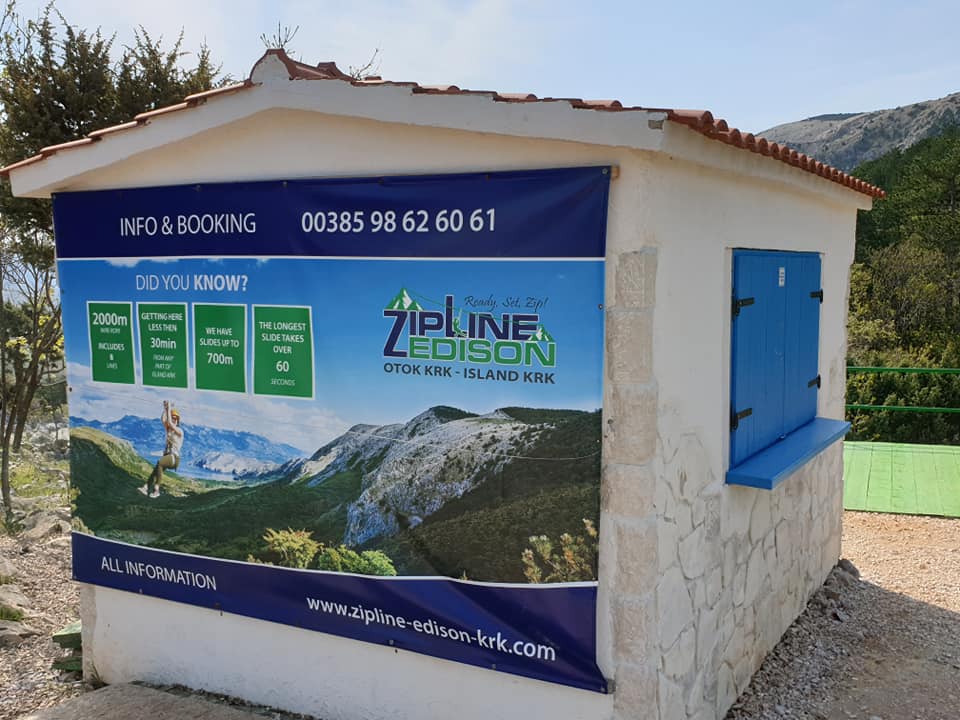
Right next to the Glagolithic letter ‘A’ – something altogether more modern for an island which I was quickly discovering really did have something for everyone.
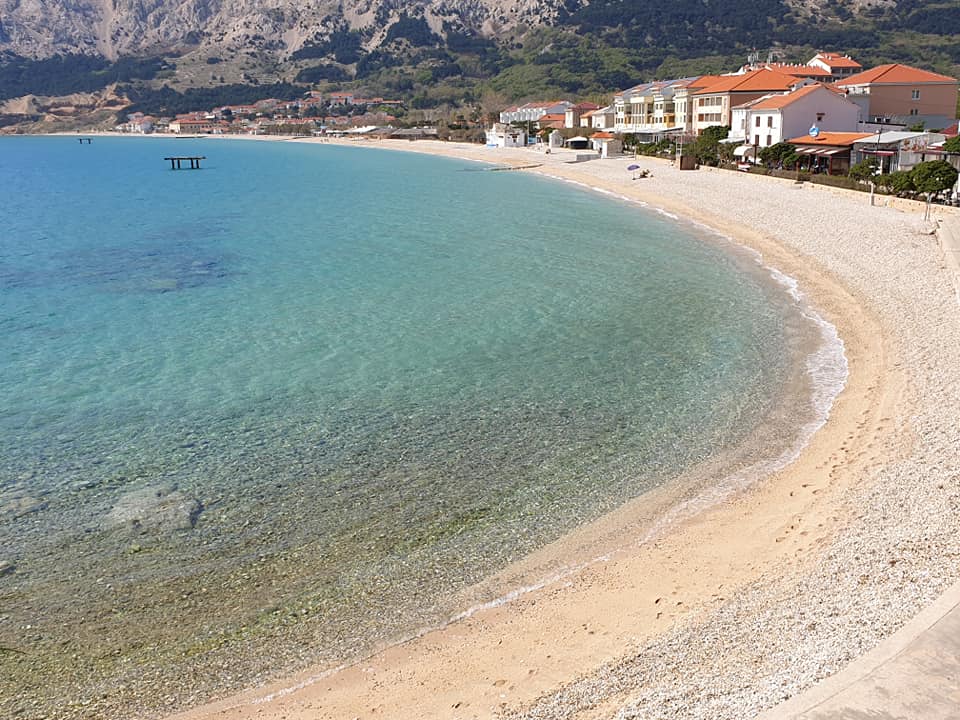
And then we saw it. Baska, in all its glory – what a delightful beach in the heart of the town.
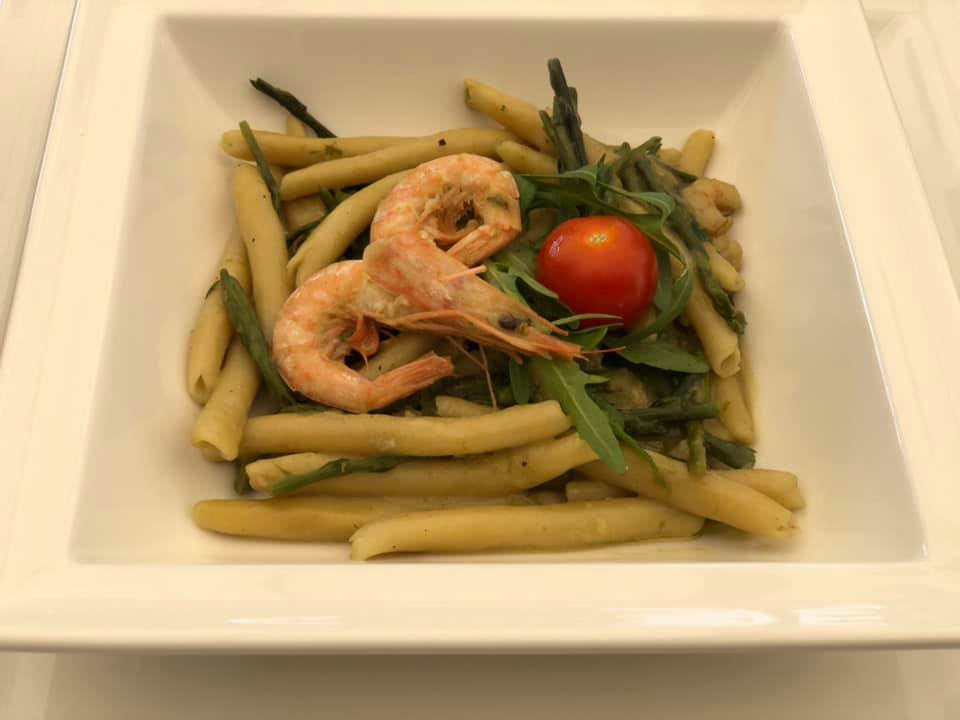
We were here for the Krk Food Fest of course, and it had been a while since breakfast, so time to attack the first restaurant of the day, Heritage Hotel Forza, which this year celebrates its 30th birthday. With dishes like surlice (hand-made Krk pasta), asparagus and prawns, above, there is no doubt that Forza will be feeding guests quality food for another 30 years and more.
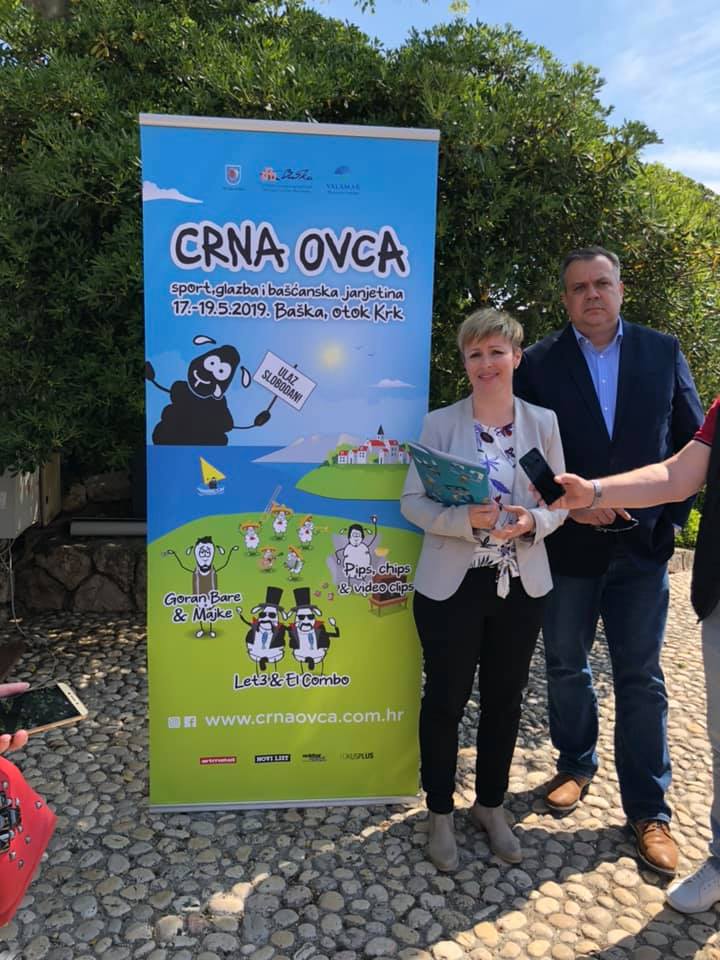
We were then introduced to what looks like a perfect family festival taking place from May 17-19, with free entrance – the Black Sheep Festival. Great name on this island of lamb. Here is how the festival introduces itself:
And the official trailer below gives you more of a feel. It is in my diary for next year. You can learn more about the festival on the official website.
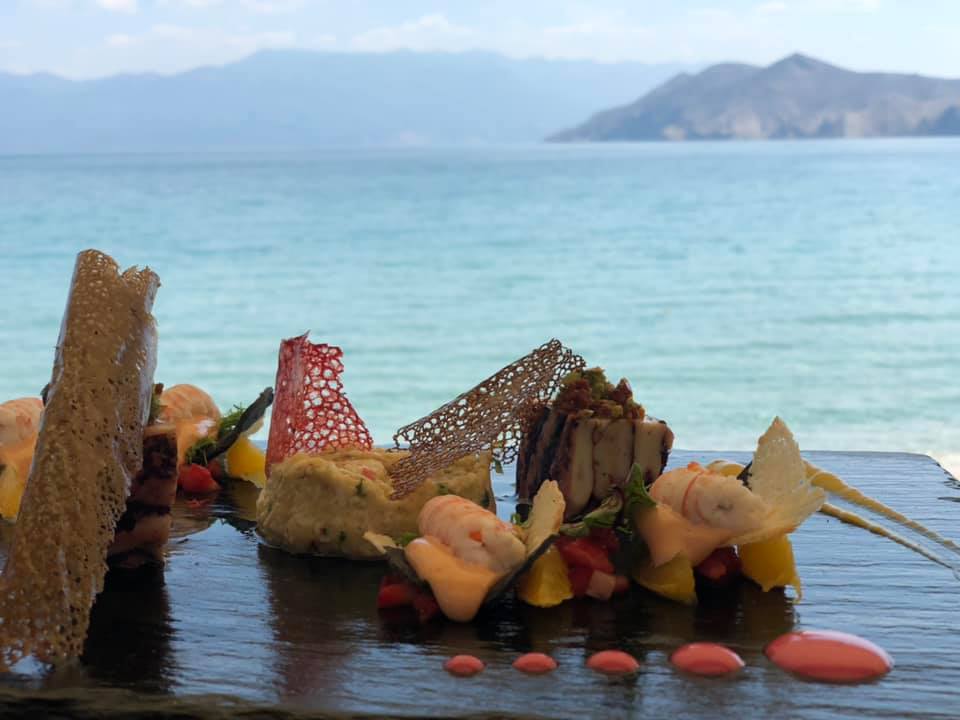
It was time for more food, and could there be a more perfect location than Cicibela, right on the water in the middle of the beach. A divine spot, more than matched by its seafood specialities.
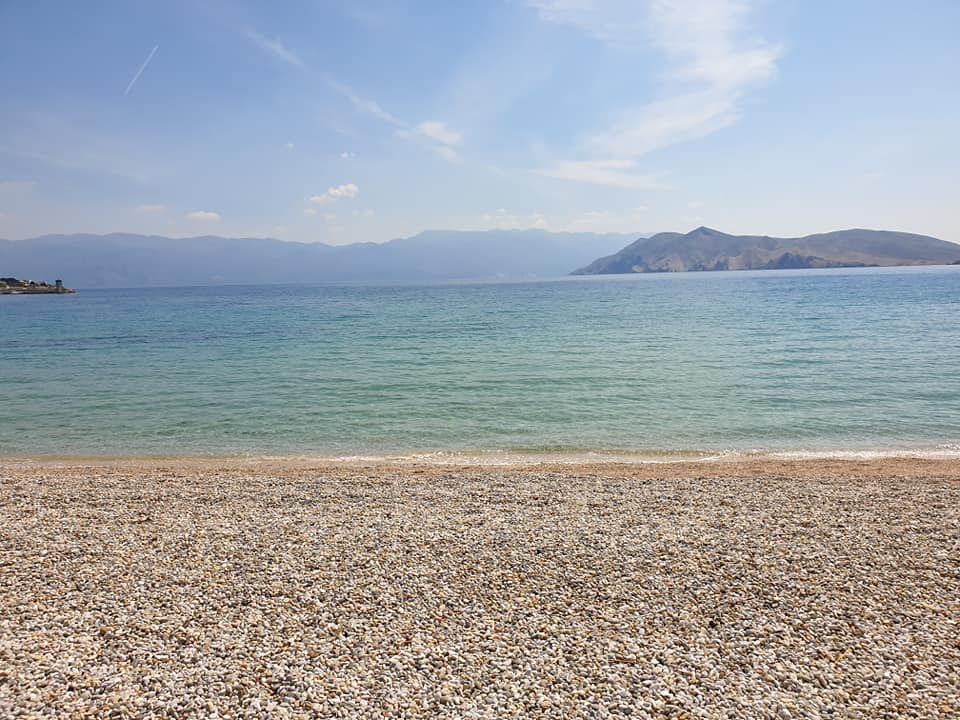
Ah yes, summer is on the way.
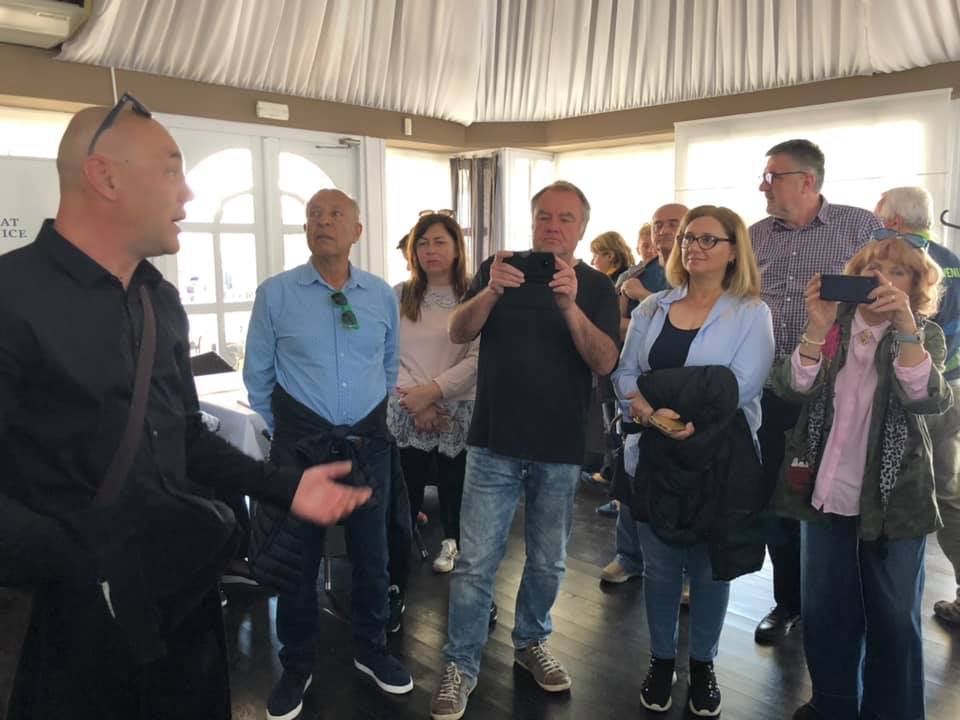
One cannot sit for long in paradise when Karin Mimica is running the tour, however, for there is just so much more to see. Next stop Punat and the Marina restaurant, where we were treated to excellent finger food, comprising asparagus, seafood and lamb specialities. Delicious.
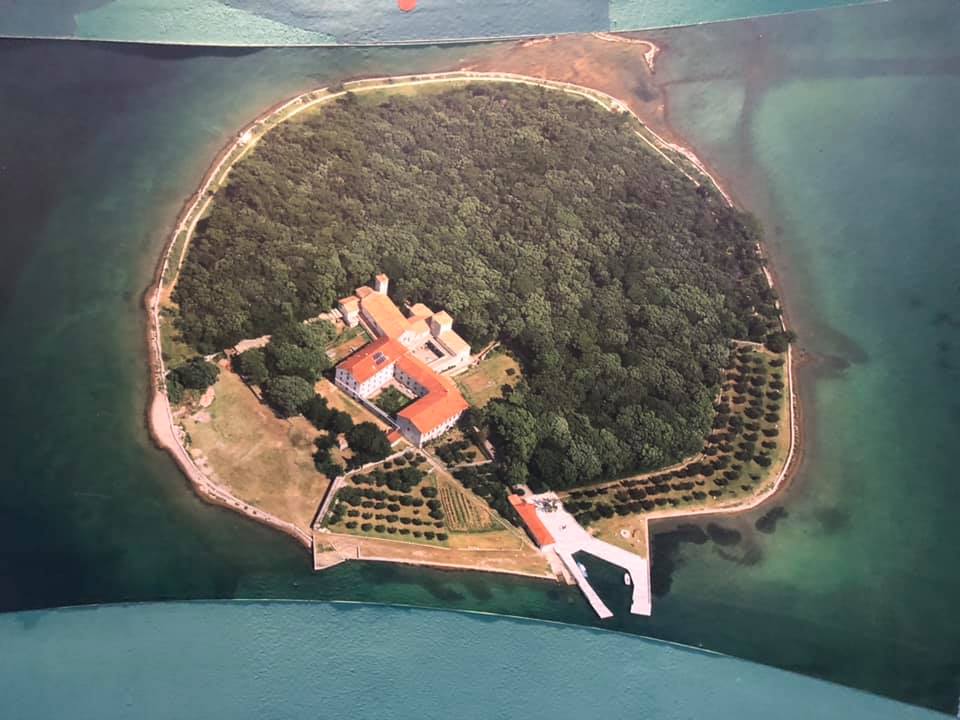
Next up, a short boat trip to the island of Kosljun, which is nestled in the bay close to Punat, and home to a few Franciscan friars who live in the monastery there.
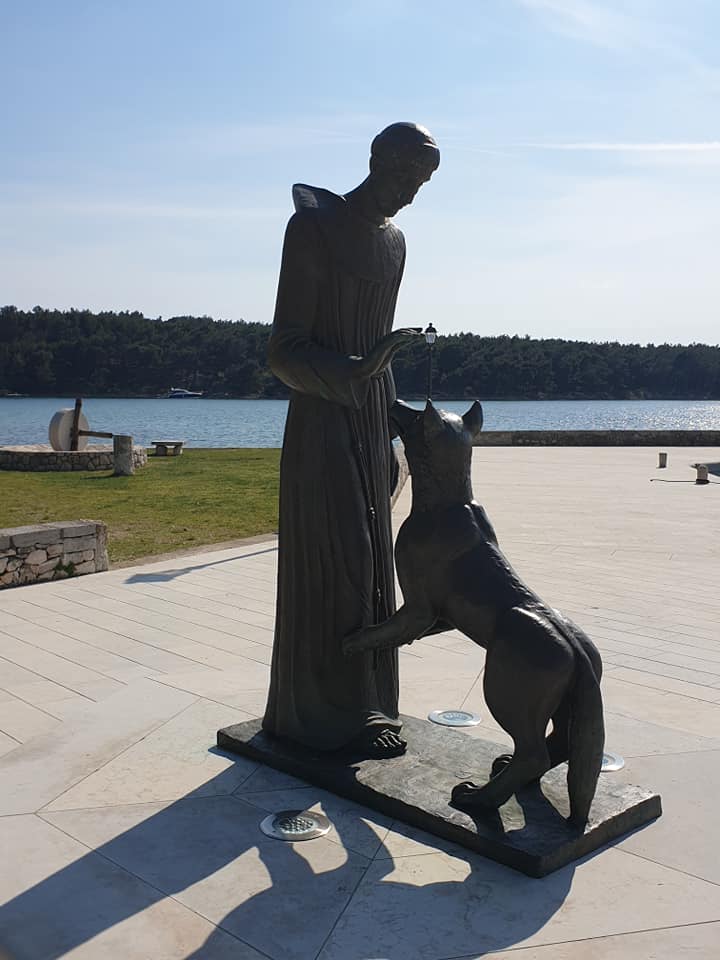
It is an island of incredible peace and tranquility, as well as housing some fascinating museum exhibits, documenting the history of the region.
And a truly friendly tour guide, who waved us off enthusiastically after our short tour.
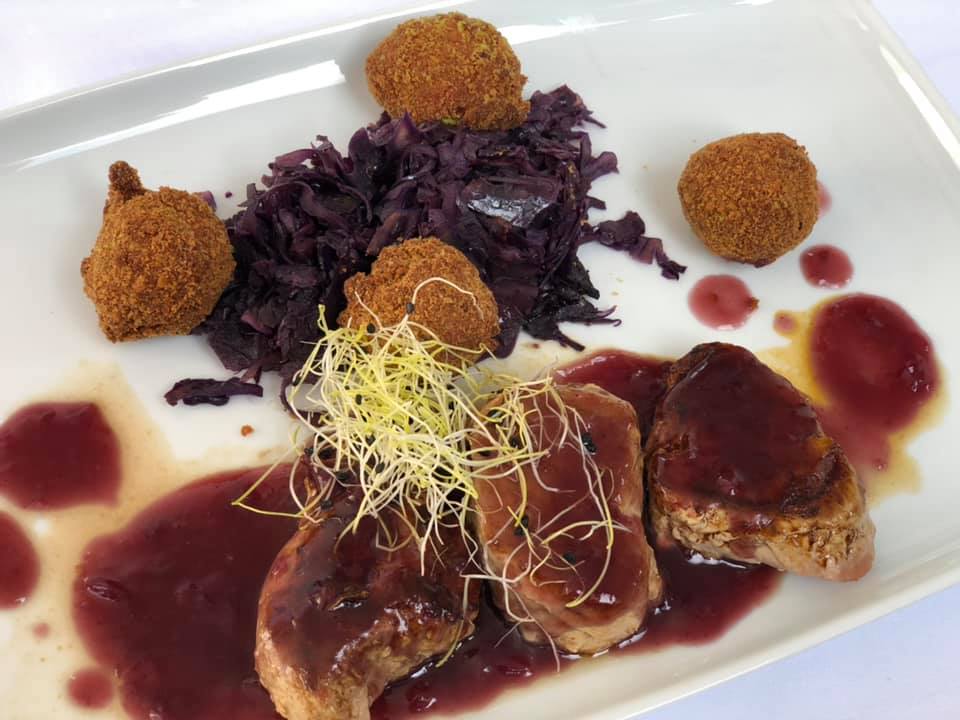
We hadn’t eaten for at least 10 minutes, and Bocoon on the waterfront in Punat was on hand to solve that problem.
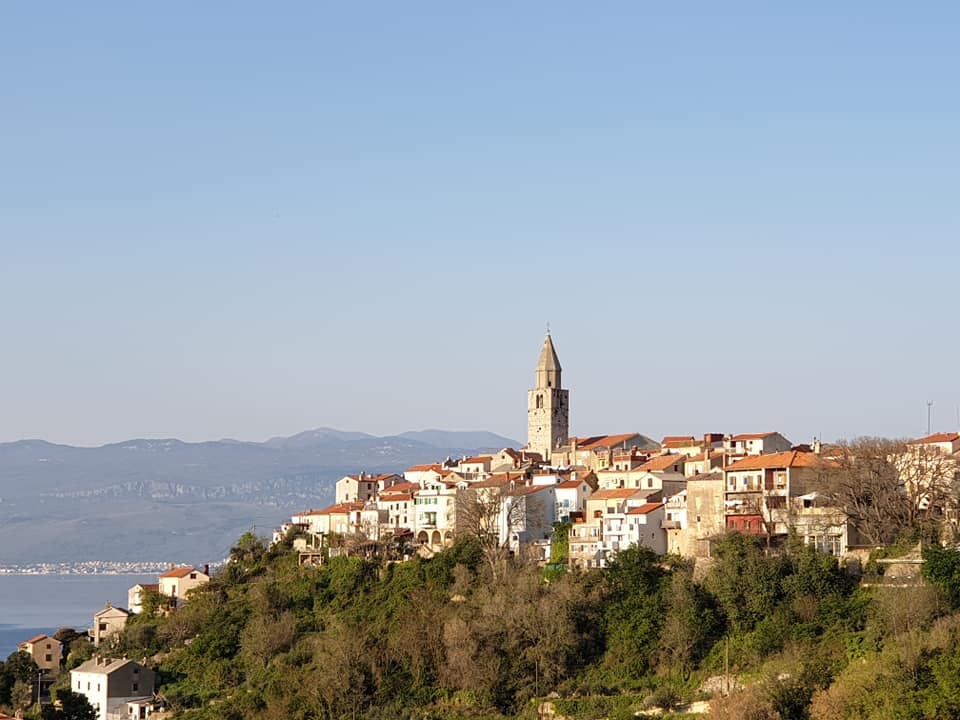
I have vague memories of my first visit to Krk back in 2006 when my wife was in Rijeka hospital for the birth of our first child, the strongest of which is the picturesque old town of Vrbnik. It was where I first became acquainted with the local Zlahtina golden wines, and it was a pleasure to visit again, via a glass of sparkling at the Ivan Katunar winery at the entrance to Vrbnik.
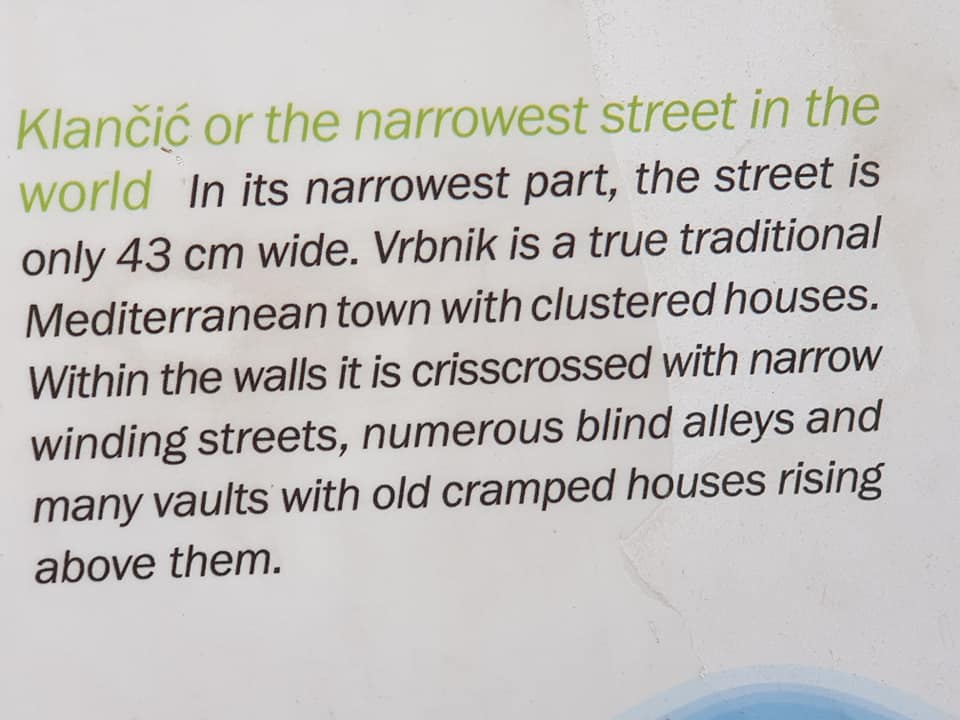
This latest visit to Vrbnik came with its own challenge for fat bloggers, allegedly the narrowest street in the world.
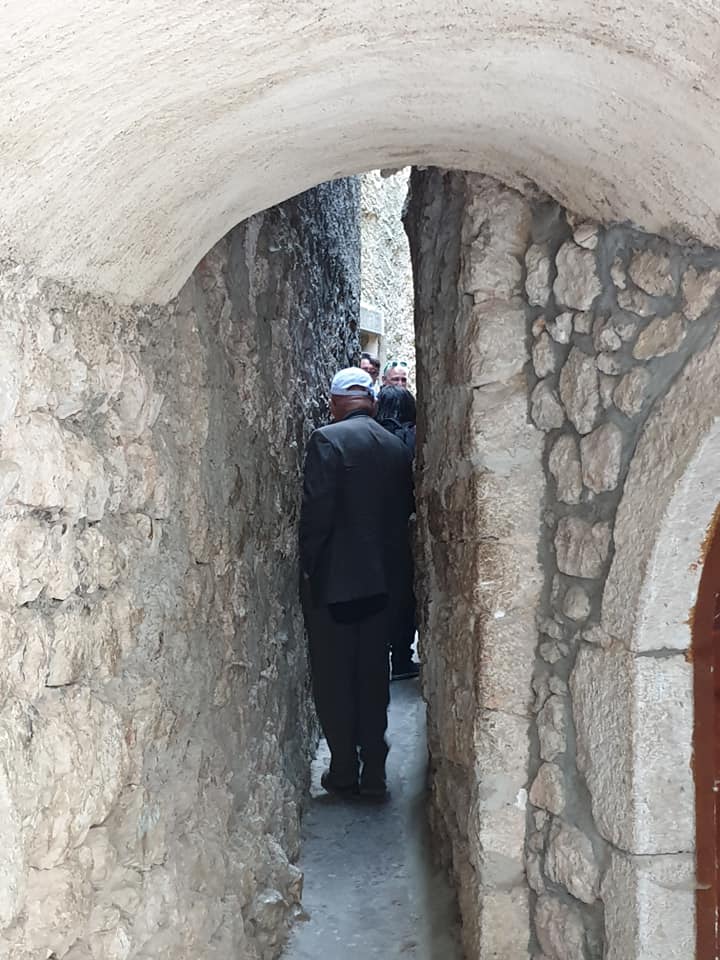
I am not sure about the authenticity of that claim, but it is a street not recommended when you have been eating and drinking for two days with Gastronaut.
Squeezing through was well worth it, as we were rewarded with nibbles and a glass of wine from the Sipun winery in Stara Verbanska Kuca, a superb little museum in an old house in Vrbnik, celebrating life as it once was. The owner is apparently Russian, and he fell in love with Vrbnik and wanted to put something back, so he appealed to locals to donate items from Vrbnik’s past. The result is more than impressive.
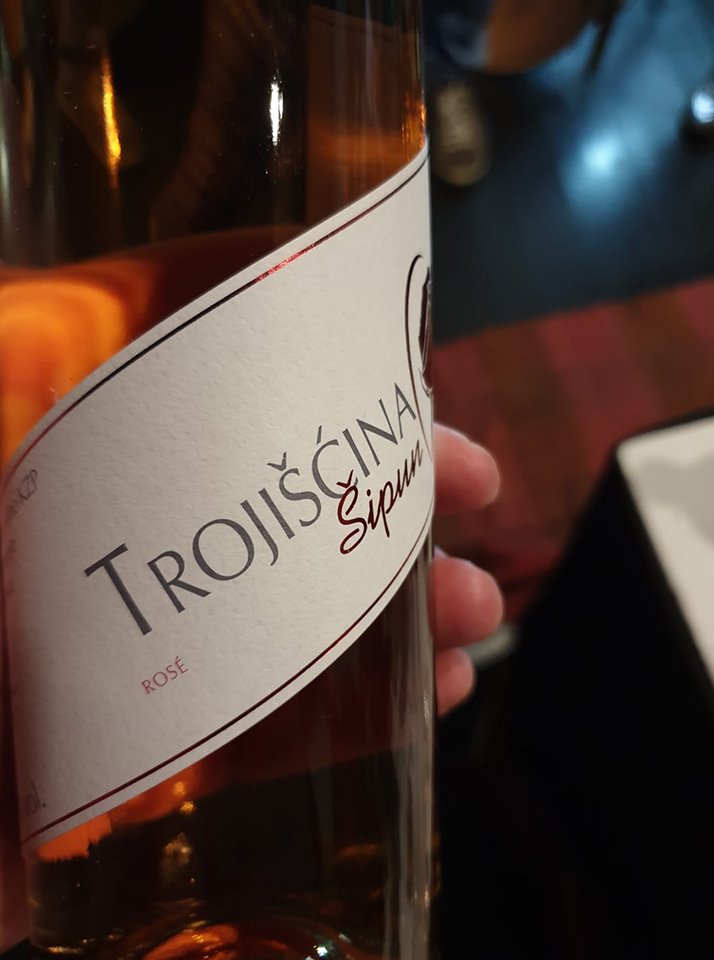
As with every Gastronaut trip, there were plenty of new discoveries, including the Sipun Trojiscina rose, a red grape variety which was all but extinct, but grows on Susak and Krk, and is being resurrected by the Sipun winery.
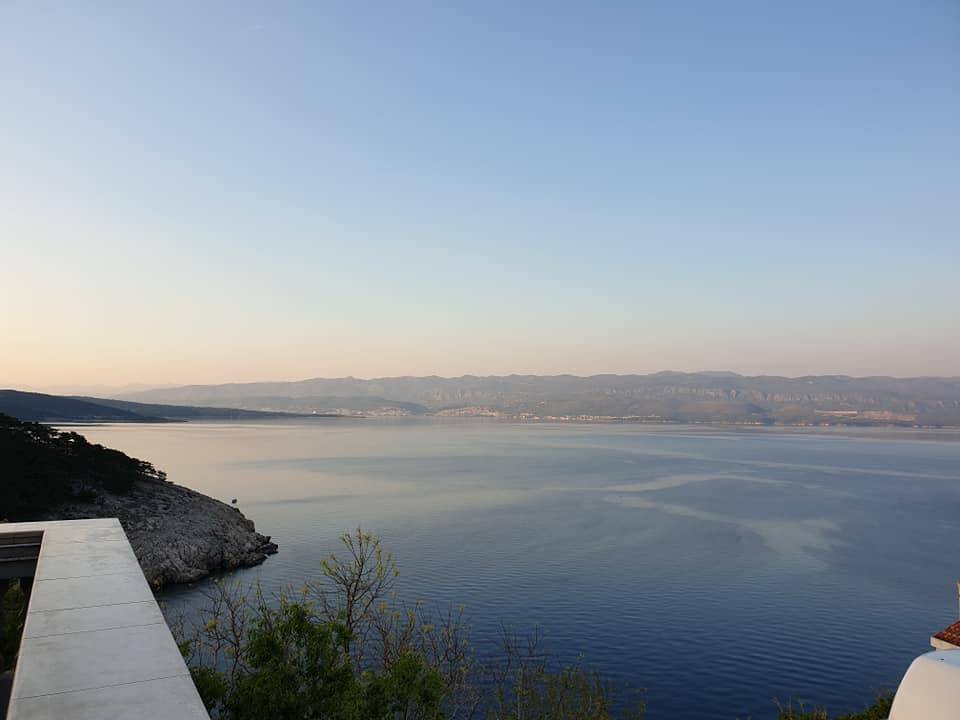
With all the lunches finished, it was time to think of dinner, but not before a little aperitif on the outstanding and spacious Nada terrace, a great family restaurant which served up a 5-course special.
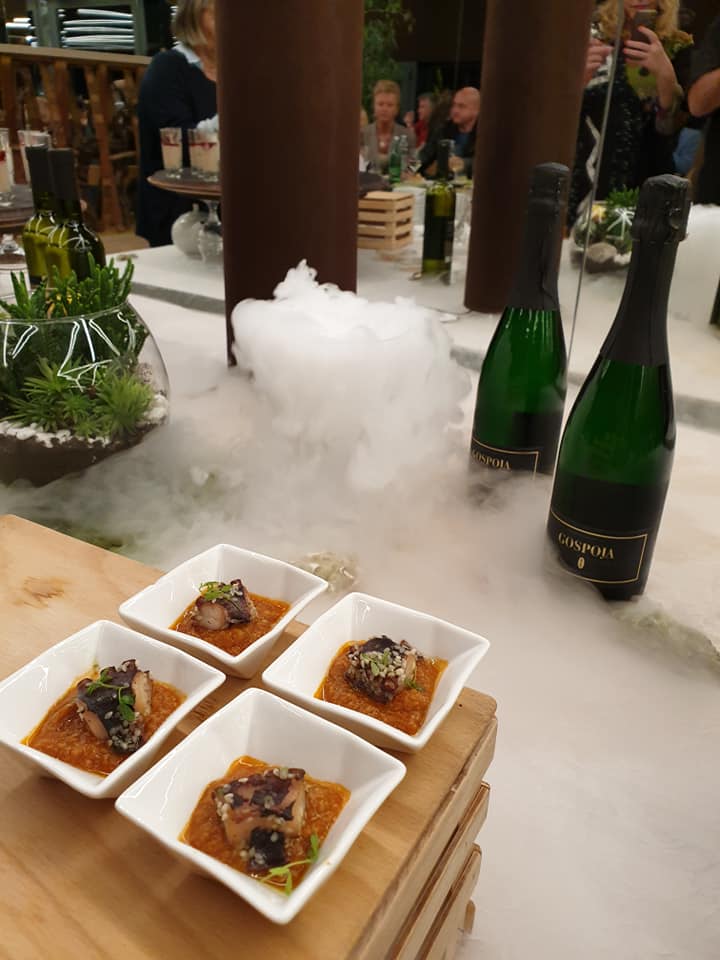
There was just one more stop before Karin would allow us to rest our weary limbs, and one I was particularly looking forward to – Vonotel Gospoja, the first wine hotel in Croatia, about which we have written before.
I have to say that I loved it, a really interesting concept, and in terms of what is happening in the kitchen, I will leave you with these. To be explored at a later date.
I am sure that all this talk about food is making you hungry. So why not head to the Krk Food Fest which runs until May 31. More details here.



